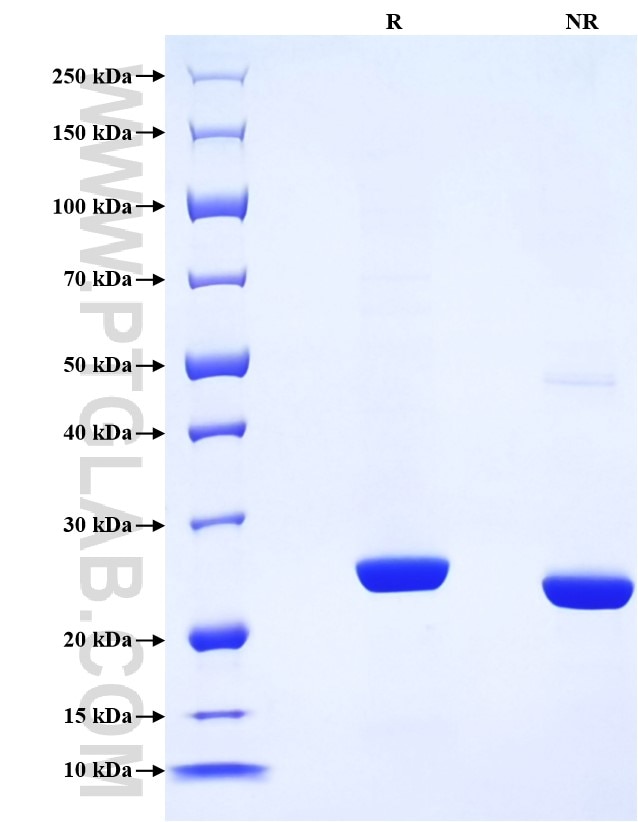Recombinant Human Complement factor D protein (His Tag)
Species
Human
Purity
>90 %, SDS-PAGE
Tag
His Tag
Activity
not tested
Cat no : Eg1189
Validation Data Gallery
Product Information
| Purity | >90 %, SDS-PAGE |
| Endotoxin | <0.1 EU/μg protein, LAL method |
| Activity |
Not tested |
| Expression | HEK293-derived Human Complement factor D protein Ile26-Ala253 (Accession# P00746) with a His tag at the C-terminus. |
| GeneID | 1675 |
| Accession | P00746 |
| PredictedSize | 25.5 kDa |
| SDS-PAGE | 23-26 kDa, reducing (R) conditions |
| Formulation | Lyophilized from 0.22 μm filtered solution in PBS, pH 7.4. Normally 5% trehalose and 5% mannitol are added as protectants before lyophilization. |
| Reconstitution | Briefly centrifuge the tube before opening. Reconstitute at 0.1-0.5 mg/mL in sterile water. |
| Storage Conditions |
It is recommended that the protein be aliquoted for optimal storage. Avoid repeated freeze-thaw cycles.
|
| Shipping | The product is shipped at ambient temperature. Upon receipt, store it immediately at the recommended temperature. |
Background
Complement Factor D, also known as CFD or adipsin, is a serine protease. Unlike most proteins of the complement system, which are synthesized by the liver and immune cells, factor D is predominantly produced by and secreted into the bloodstream by adipocytes. However, it is also synthesized by macrophages and monocytes, as well as by brain astrocytes to a lesser extent. factor D plays a role in adipose tissue. Adipocytes are energy reservoirs that play an important role in energy balance. Not only are they responsible for lipolysis but they are also involved in glucose uptake and triglyceride synthesis.
References:
1. Jonathan Barratt. et al. (2021). Front Immunol. 12:712572. 2. White RT. et al.(1992). J Biol Chem. 267(13):9210–9213. 3. Choy LN. et al. (1992). J Biol Chem. 267(18):12736–12741. 4. Song N-J. et al. (2016). PloS One.11(9):e0162228.

